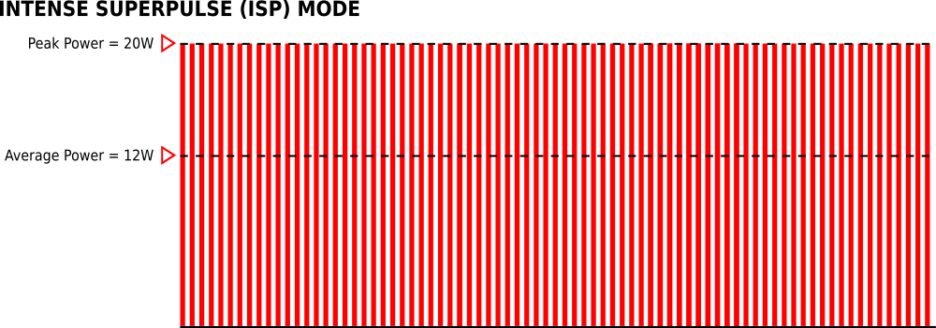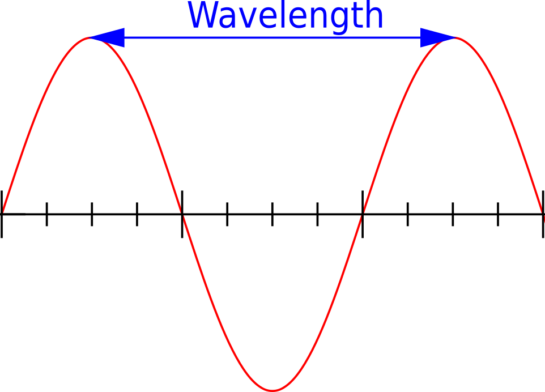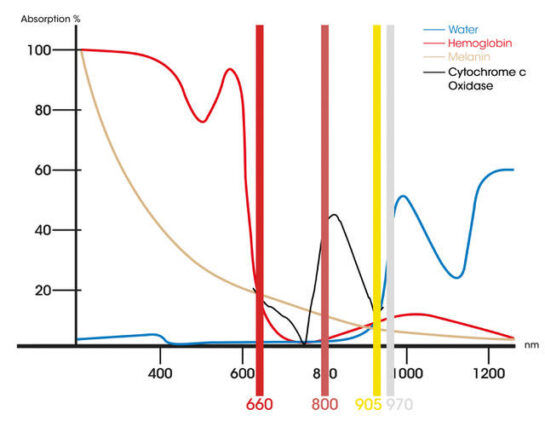Laser Therapy Or
PhotoBioModulation For
Medical and Veterinary Practitioners
ENHANCE CELLULAR METABOLISM - PAIN - INFLAMMATION - TISSUE HEALING
970nm
Increase
Blood Flow
905nm
Boost Cells
Oxygenation
800nm
Enhance
ATP Production
660nm
Assist
Tissue Healing

Learn about K-Laser technology, which has been utilised for two decades in the USA and Europe to alleviate pain, inflammation, and enhance wound healing.
Cellular Health Is Key To Healing
" Cellular health is important because it is what determines the health of each organ, which is made up of cells.
The organ is sort of the unit of health "
Leonard Guarente, Ph.D., the Novartis Professor of Biology at Massachusetts Institute of Technology.
We believe that emphasizing the importance of micro-level health is a crucial step towards recovery, as cells serve as the foundation of living organisms.
Achieving cellular health through PhotoBioModulation Therapy
K-LASER uses visible and near-infrared wavelengths to target specific chromophores in tissues, resulting in the reduction of pain and inflammation while promoting tissue healing.
Photobiomodulation (PBM) was discovered in the 70s and was first known as "Low Level Laser Therapy" (LLLT) or "Cold Laser Therapy," as only low-powered lasers were available at that time.
Since 2002, K-Laser has been developing high-power lasers that enable health professionals to use PBM for faster, deeper, and more efficient treatments, known as "High-Intensity Laser Therapy" (HILT). K-Laser devices can also output low power when needed for specific applications.
By accelerating the normal biochemical process, K-Laser increases blood flow, enhances cells' oxygenation, and promotes ATP production, aiming to improve healing while reducing pain and swelling.
What Is A Laser Therapy Treatment?
A laser therapy treatment consists of several parameters that need to be finely tuned to optimize its efficiency, including:
- Power: This includes both the average power and peak power of the laser.
- Delivery mode and frequency: Different modes of delivery such as Continuous Wave (CW), Pulsed Wave (PW), SuperPulse (SP), and IntenseSuperPulse (ISP) can be used, with each having its own frequency.
- Wavelengths: One or several wavelengths can be used simultaneously, depending on the specific treatment requirements.
- Duration of treatment: The length of time for which the laser is applied is an important factor in determining its effectiveness.
Multi-Phase
Laser Treatment
All K-Laser units are multi-phase capable, which means that a typical 3-5 minute treatment session can be divided into up to 12 successive phases. Each phase has a unique laser configuration designed to optimize energy absorption at the desired depth by cells and target the different tissue types present in a specific area of the body.
As the practitioner inputs specific patient and treatment area characteristics, each phase of the treatment is automatically configured to ensure the best possible outcomes.
Understanding Laser Therapy Parameters
Power: Class IIIa, Class IIIb, Class IV, LLLT, HILT - Understanding Laser Outputs
A- Average Power
It is important to note that laser classification is solely intended to assess the potential damage to the eye and is not related to laser therapy itself. This safety classification is based solely on the AVERAGE POWER that a laser unit can output when used at its maximum power.
The laser classification system is as follows:
- Class IIIa: < 0.005W
- Class IIIb: < 0.5W
- Class IV: > 0.5W
The maximum average power of a laser unit determines its real maximum power. It is worth mentioning that a Class IV laser can be used at low power as needed, depending on the targeted area and the depth of treatment required.
For instance, a 15W K-LASER CUBE-4-PLUS used in Continuous Wave Mode (CW) or Pulsed Wave Mode (PW) at full power will have a high average power output (when used at maximum power), providing a greater quantity of beneficial energy to cells.
B- Peak Power (With SuperPulse Mode - SP)
This method is utilized for low-power lasers that cannot attain high average power output.
It is noteworthy that a very short burst of energy (nanoseconds) can exceed the maximum average power of a laser unit. The approach is to deliver energy in extremely brief peaks rather than continuously or pulsing, a technique called "SuperPulse."
The example given below demonstrates a low-power laser diode (1W) releasing a 15W peak power output for a very brief period (T-ON), while T-OFF is the period where nothing is emitted. In this scenario, the duty cycle is 6.7% (1/15).
Although the peak power is 15W, the average power is still only 1W, implying that the targeted tissue does not receive a significant amount of energy.
Advantages of SuperPulse Mode
The SuperPulse mode mainly provides the following benefits:
- Allows for deeper tissue penetration
- Reduces interaction with melanin in the skin
Disadvantage of SuperPulse Mode
Even though the SuperPulse mode provides a higher peak power, it does not increase the average power RECEIVED BY the tissue.
In the previously mentioned example, despite the 1W laser being transfered via 15W peak power, the average power remains 1W. Therefore, the energy received by the tissue remains low and insufficient for many treatment requirements.
Important note on SuperPulse mode
Manufacturers frequently utilize extremly low average power diodes, usually rated from 0.005W to 0.1W, when implementing the SuperPulse method, but may claim peak power outputs ranging from 15W to 300W!
To enhance the appeal of their equipment, these manufacturers often advertise only the peak power and avoid mentioning the low power rating of 0.1W or less.
C- Peak Power (With IntenseSuperPulse Mode - ISP)
The IntenseSuperPulse (ISP) mode is a high-average-power variation of the SuperPulse (SP) mode mentioned earlier.
The main objective of the ISP mode is to exploit the benefits of the SP mode while mitigating its drawbacks.
With the K-Laser in ISP mode, it is possible to use the SuperPulse mode while maintaining a high average power.
For example, the K-LASER CUBE-4-PLUS, which is technically capable of such performance, can achieve a 20W ISP output with a 12W average power while operating at full power. The unit's standard maximum output is 15W.
Higher power Laser for correct dose, faster treatment, and deeper penetration
Getting the correct laser dose
The appropriate dose for PhotoBioModulation varies between 0.5 to 12 joules/cm2, depending on the application and the area of the body being treated.
For instance, when treating a painful lower back:
- The area to be treated would be 20 cm x 15 cm = 300 cm2
- The recommended dose for this area would be 8 joules/cm2
- The total energy required would then be 300 x 8 = 2,400 joules.
The energy delivered is calculated based on the AVERAGE POWER alone.
- Treatment time with a 0.005W laser: 2400J / 0.005W = 480,000s = over 133 hours
- Treatment time with a 0.5W laser: 2400J / 0.5W = 4800s = 80 minutes
- Treatment time with a 5W laser: 2400J / 5W = 480s = 8 minutes
- Treatment time with a 10W laser: 2400J / 10W = 240s = 4 minutes
- Treatment time with a 15W laser: 2400J / 15W = 160s = 2.6 minutes
Continuous Wave (CW) vs Pulsed Wave (PW)
It is important to note that in real-life treatments, lasers are typically used in Pulsed Wave (PW) mode with a duty cycle of 50% (T-ON / T-OFF). Thus, the treatment time would be twice as long as the calculations above, as PW mode delivers half the energy of CW mode.
As time is a crucial factor to consider in professional use, a more powerful laser is much more effective.
Faster treatment and deeper penetration
Higher power K-Laser units offer practitioners the advantage of faster treatment and deeper tissue penetration.
In Musculoskeletal cases, K-Laser treatment aims to saturate all the cells within the targeted zone with the appropriate amount of energy. This is not just limited to a point (acupuncture) or surface (wound treatment).
However, the power remaining after 7 cm of depth in tissue can vary between 5% to 15% of the power applied at the surface due to several factors such as the wavelengths used, frequency, targeted area, and darkness of the skin. This is because the laser light gets scattered and absorbed by tissue along the way.
Therefore, a higher-powered K-Laser unit can transfer more energy to deeper tissue.
Wavelengths used for specific effects
The wavelength of light is measured in nanometers (nm) and corresponds to a specific color visible to the human eye. For instance, 445nm is blue, 530nm is green, and 660nm is red.
Infrared lights, which have a wavelength above 700nm, are not visible to the human eye but can interact with specific entities in targeted tissues, known as chromophores, to trigger specific effects in the body.
As laser light penetrates tissues, it may be scattered or absorbed gradually, with the wavelength acting as a carrier for the energy.
Certain wavelengths can effectively penetrate specific types of tissues while being better absorbed and interacting with others. The goal is to penetrate the skin and interact with hemoglobin to facilitate oxygen release and with mitochondria to increase ATP production.
Which wavelengths should be used for laser therapy?
800nm => ATP
The primary goal of photo-biomodulation therapy is to accelerate cell healing by increasing the production of ATP in the mitochondria. To achieve this, we use a specific wavelength (800nm) of laser light that targets Cytochrome c oxidase. This wavelength enhances the use of oxygen to generate ATP, leading to improved cellular function and faster tissue repair.
905nm => Oxygenation
Since the action of 800nm leads to accelerated use of oxygen, it is necessary to provide more oxygen to sustain the process. This is where 905nm comes into play as it targets hemoglobin and triggers the release of oxygen.
970nm => Vasodilation
The action of 905nm leads to the extraction of oxygen, but in order to sustain the process's efficiency, new blood needs to be brought in. To achieve this, 970nm is used as a vasodilator, which targets water specifically and creates a temperature gradient in the tissue.
660nm => Skin/Wound healing
660nm is visible red light, which has limited penetration into the tissue but has been found to be very effective in healing wounds and improving skin conditions.
Frequently Asked Questions
What does the K-Laser do?
The K-Laser is effective in reducing musculoskeletal pain, inflammation, and promoting tissue healing acceleration.
How does the K-Laser work?
K-Laser employs various laser wavelengths at different pulsing frequencies and power levels to enhance tissue healing on a cellular level. This is achieved by increasing circulation, reducing pain, and minimizing swelling.
Is K-laser Effective?
K-Laser has been found to be effective in treating various musculoskeletal conditions including arthritis, bursitis, plantar fasciitis, and diabetic ulcers. It is also commonly used in post-surgery rehabilitation and physiotherapy.
How long does K-Laser therapy last?
A K-Laser therapy treatment typically lasts about 3-5 minutes per treated site, as the K-Laser is a powerful unit and requires only a short amount of time to be effective.
How long does it take for laser therapy to work?
After the first K-Laser therapy treatment, most patients experience an improvement in their condition. However, the therapy works cumulatively, with each subsequent treatment building on the benefits of the previous ones and enhancing the overall well-being of the patient. In chronic cases, it may take up to 3-6 sessions to reach maximum comfort level.
What is K-Laser?
K-Laser is an Italian company that specializes in manufacturing both therapeutic and surgical laser devices.
- Their therapeutic devices aid doctors in managing pain and inflammation while also accelerating tissue regeneration
- Their surgical devices utilize a unique technology that allows for highly precise surgeries with minimal scarring, pain, or inflammation.
Does health insurance cover K-Laser?
The K-Laser is considered part of physical therapy and is typically covered by insurance if physical therapy is covered under the patient's policy. However, coverage may vary depending on the specific insurance plan and the reason for the treatment. It is recommended to check with the insurance provider to confirm coverage before undergoing K-Laser therapy.
Is K-Laser a cold laser?
In the past, Class IIIb laser devices with an average power of less than 0.5W were referred to as "cold lasers" since their low power output was not perceptible during treatment. However, the K-Laser is a high-power laser device capable of delivering both low and high power, depending on the required treatment speed and depth. Contemporary K-Laser devices can generate average powers of 15W, 18W, 25W, 40W,or 80W.
Is K-Laser therapy safe?
K-Laser treatments are safe when administered by a certified professional
Who can purchase a K-Laser?
K-Laser devices are only intended for professional use and are not suitable for home use. They can be purchased by medical or veterinary professionals.







